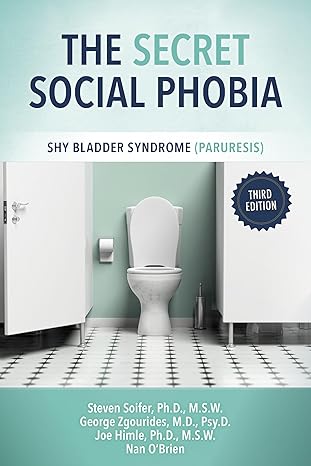Urinary Catheter Tips for Women
Revision date: March 2012
A useful method for women to locate the urethral meatus (the spot where the urethra exits the body and the point to insert a catheter) is to use a finger to feel the area while urinating. If possible, look with a mirror. Touch the spot. Remember what it feels like and where it is. While this method may seem a bit gross, it is easy and very helpful. One of IPA’s women members has graciously provided some detailed instructions below.
Also, all catheters are not created equal, and women may require one whose diameter is smaller, e.g., a 10 FR vs. a 14 FR. Catheters are available in a number of different styles, sizes, and materials. Anyone who decides to try them will need to do some experimenting to find which kind works best. Follow this link to specific instructions and tips on catheter use for women.
Women are more susceptible to urinary tract infections (UTIs or cystitis) following catheterization. Antibiotics (e.g., Bactrim, Septra) can be prescribed for use as a preventative or treatment to alleviate the symptoms. There are other things that can be done to reduce the risk of infection, such as drinking plenty of fluids—especially cranberry juice—at the first opportunity after using a catheter.
Note: Always have a doctor or nurse instruct you on catheter use before trying it yourself. If you encounter any difficulty or problems with using a catheter, see your doctor for help, as there may be a physical problem that requires medical attention.
From LydiaL:
Schedule an appointment with a urologist, urologic nurse, or gynecologist. Ask the person to teach you to cath STANDING UP. Some doctors will teach a patient lying down with a mirror, and that will be quite impractical in a restroom. When you’re in a public restroom stall you likely won’t want to cath sitting down on the toilet (not the cleanest place) with your hands and the catheter dangling in the bowl.
After some practice, it’s just about as easy as changing a tampon.
Here’s how to do it:
First you have to be pretty comfortable with your body (I guess this is kind of graphic. Wash hands with soap and water before going into the stall, but don’t try this in public until you master it practicing at home.
To find the urinary opening it’s located at the very top of the vagina but just below the clitoris. That means that with one finger in the vagina pressing up just a little bit (really not at all because you just want to be at the top of the vagina, if you press you will press the opening closed and you don’t want that) now the opening will be located just above your finger but below the clitoris.
So after I wash my hands and go in the stall I first have to get set up. This means taking out the catheter (from a plastic bag in my purse) and putting some lubrication (KY jelly) on the end while it’s still in the bag. If you happen to be wearing a skirt, just pull it up and neatly tuck the bottom hem in the waistline so it stays out of the way. Then you can pull down your panties or if wearing jeans just pull everything down.
Then if you’re right handed take the catheter loosely coiled in the right hand with the tip between thumb and forefinger sticking out about an inch or so. Then bend your knees to squat just a few inches to get more room. With the left hand use the ring finger and index finger to spread the outer lips and place your middle finger just inside the vagina (with the finger pad facing up) to serve as a guide. Then with the right had put the catheter tip in just above the left middle finger and that’s it. After an inch or so the urine begins to flow so make sure the other end of the catheter is over the toilet or you will get wet! (Yes that is the voice of experience.) The first few times you will probably have to probe around a little bit or a lot with the catheter tip before you find the right opening but you can feel something different when it goes in. Not painful as much as it is surprising to feel something there so you will know it.
Also when you first learn at home it helps to put your left foot up on a small stepstool or the side of the tub when you’re trying to find the opening.
MORE IMPORTANT DIRECTIONS
Now that I thought about it and actually watched myself do it a couple of times the job of the left hand is actually very subtle and complicated and I think I can give a better explanation. Probably that’s why most women don’t learn how to do this but it’s really very easy once you learn how you don’t even think about it at all that’s why I didn’t write it earlier.
What I didn’t say is that after the left middle fingertip (only the tip) is resting comfortably in the vagina (do this first) the middle finger actually gives a lot of DOWNWARD TRACTION on the vagina side walls to pull the urinary opening down open.
To do this is complicated because if you just pull down nothing will happen (your finger will just slide down.) To accomplish this you’ll need to experiment with pressing against your pubic bone to get the friction needed, as described below.
So while your ring finger and index finger are holding the outer lips back they also have to squeeze the side walls of the vagina against the middle finger so that when the middle finger pulls down the top part of the vagina stretches down and the urinary opening stretches open. Does that make sense? I know this sounds very complicated because how can the ring finger and index finger hold one part open while squeezing another part closed at the same time?
The answer is to do this you need to press IN with your index finger and ring fingers very firmly against your pubic bone. This holds the lips open (pins them open?) Only then you can squeeze them around your middle finger too.
So altogether it goes like this (don’t worry, actually doing it is 10 times easier than writing about how to do it.)
The left middle fingertip is in the vagina. Then the left index finger and ring finger hold open the outer lips and at the same time push in very firmly against the pubic bone. Now at the same time while you are still pushing in you can squeeze the index finger and the ring finger together against the middle finger enough so that now you gently pull DOWN with the middle finger the vagina wall stretches down and the bottom of the urinary opening is pulled down open. That’s all in one combination movement, spread out, push in, squeeze together, pull down. Your middle finger in the vagina makes sure there is enough space to get to the urinary opening and is lined up as a guide to find the opening by sliding the catheter over the middle finger tip.
I wish there were a way to just show you because it’s really very easy but two whole pages of directions would scare me away from anything!
One more thing I forgot also, you can do this anyway just the same even if you have a tampon in place.
Please just read the directions over, until it seems simple, because it really is simple. I just can’t explain it well. Then with a little practice it will change your life too. That’s what this is really about, is taking back control of your life and becoming a whole person again.
QUICK LINKS
INTERNATIONAL PARURESIS ASSOCIATION
P.O. Box 21237
Catonsville, MD 21228
You Are Not Alone.
There Is Help For You!
Shy Bladder, Bashful Bladder, Pee Shy
IPA OFFICE HOURS
Monday - Friday
10:00am - 6:00pm (ET)
844-I-CANT-PEE (422-6873)
US/Canada
443-315-5250 Office
Email: getinfo@paruresis.org
This website is NOT a substitute for medical or legal advice and does not constitute the practice of law, medicine, psychiatry, clinical psychology, clinical social work, or any other mental health profession. If you are having trouble urinating, you should always contact a physician since difficulty with voiding can be a symptom of a serious medical condition. We are a group of professional people and people who have suffered with paruresis. We have assembled a board and a board of advisors to help people cope with urinary dysfunction that has a psychological or social origin. On this website, we are NOT practicing medicine, psychiatry, clinical psychology, clinical social work or any other mental health profession. You should have your doctor evaluate your condition before diagnosing yourself, and seek the appropriate necessary mental health counseling if warranted. IPA, Inc. disclaims any and all legal liability whatsoever. Use of the term “member” or “membership” refers to donors above $100 each July 1 to June 30 period and does not convey any legal or ownership rights in IPA.




